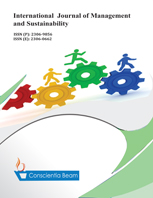An examination on the factors that influence the intention to use chatbots in Malaysia
DOI:
https://doi.org/10.18488/11.v12i3.3457Abstract
The purpose of this study is to investigate the factors that motivate people in Malaysia to interact with chatbots in their everyday lives. Because of this, the primary objective of this study was to determine the relationships between four different independent variables. These variables were perceived ease of use, perceived usefulness, social influence, and security concerns. The objectives of this research project have been accomplished through the collection of primary data using a survey developed in Google Forms and a Likert scale with five points. The general population of Malaysia served as the source for the samples taken. A total of 284 samples were collected through the use of a method called convenience sampling. Customers based in Malaysia who are already making use of chatbots make up the population of interest in this study. In order to verify the validity of the hypothesis, additional analysis of the data was carried out using the software programme Smart-PLS 4. The Unified Theory of Acceptance and Use of Technology, also known as UTAUT, was used as the basis for the modelling of the research effort that was conducted for this investigation. This study acknowledged that there were some limitations and offered several suggestions for how future research and business owners, particularly those engaged in e-commerce, can improve their competitive advantage. Those who participate in online business were singled out for special consideration.

